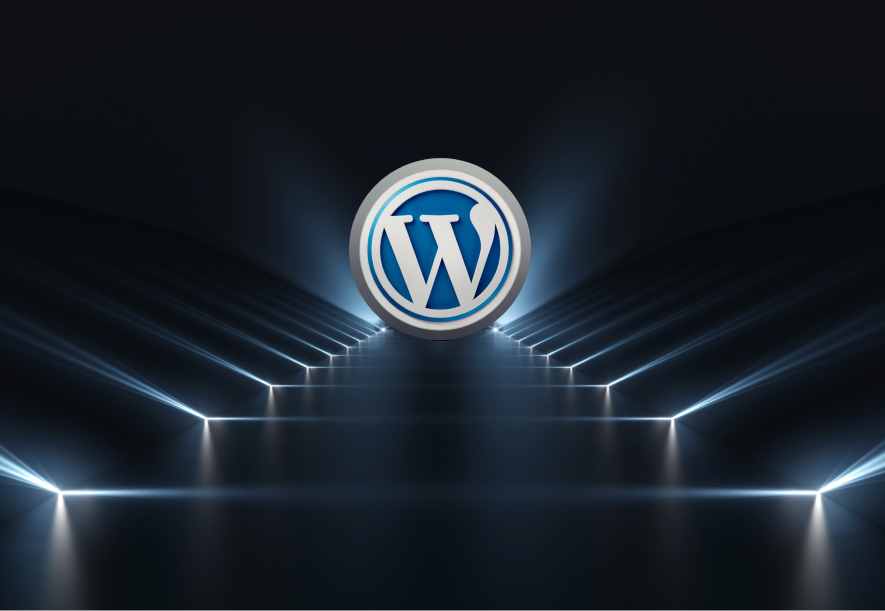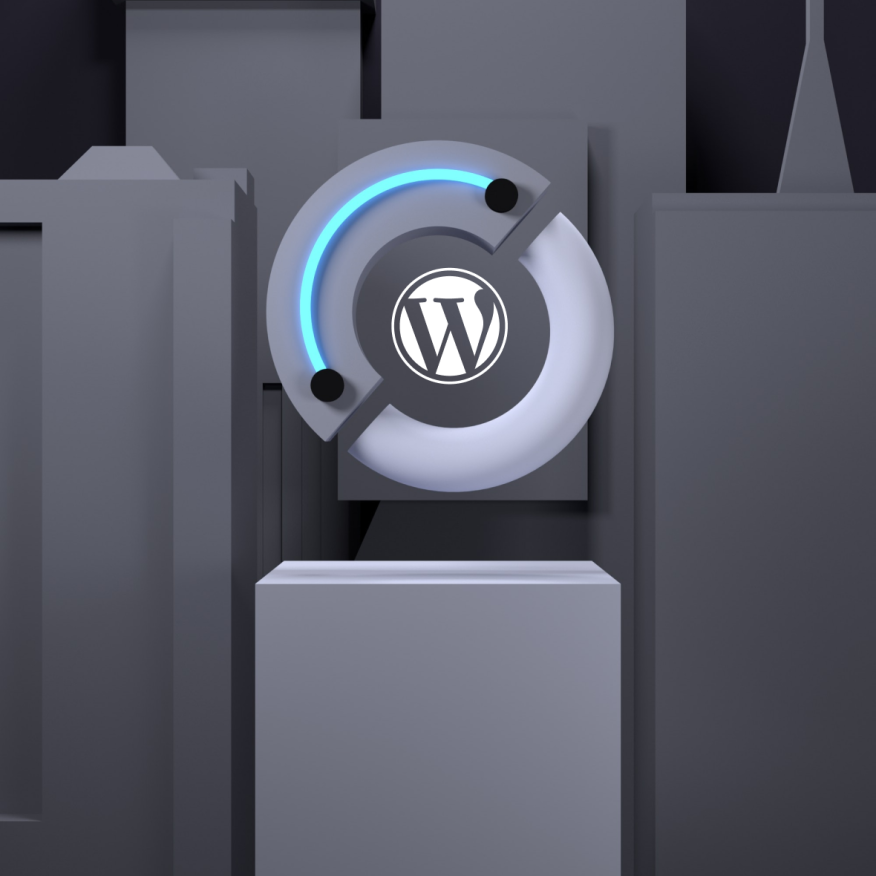A blog-forward platform that has since transformed into one of the web’s most powerful content management systems. It is used by some of the world’s biggest enterprises, such as Sony, Microsoft, and Facebook. You might say WordPress has grown beyond its creators’ wildest expectations.
Did you know that 43% of the web runs on WordPress?
The status quo may be to think that most companies’ websites run on proprietary built platforms. In reality, many sites, even some that might suprise you, are powered by WordPress.
Here’s what that means for you and your growing business.
Why WordPress is amazing
If you’re thinking about switching to a new platform or looking to expand your current site’s offerings, WordPress is a great way to build out your company’s digital presence.
Here are a few of the benefits that WordPress can offer:
Ongoing support and an open-source platform.
It’s 2022. It is time to move away from disconnected and proprietary systems that are slow, clunky, and can be troublesome for future changes, site updates, and integrations.
Open source isn’t a dirty phrase anymore. Get ready for complete freedom, flexibility, and customization when it comes to your website. As well, you get full access to a whole ecosystem of WordPress-focused agencies, developers, and designers to bring your vision to the web. Innovate and make decisions at your own pace, not on someone else’s timeline.
Content capabilities above and beyond.
True to its roots, WordPress is still built with content creators and editors in mind. With a mission to democratize publishing, their ambitious Gutenberg Project offers enhancements, ease of access and freedoms for everyone working within the WP ecosystem. From templates built by agencies for their clients to users being able to create the website of their dreams without having to look at shortcodes.
Plus, WordPress is working to ensure their bundled themes and admin access are compliant with Web Content Accessibility Guidelines 2.0 AA wherever possible so no one gets left behind.
Stay safe, stay secure.
Sure, running more than 1/3 of the web’s sites on the same CMS might lead to being a prime target for potential security attacks. But it also calls for significantly tougher testing and vetting processes to ensure those things don’t happen. At its core, WordPress is an incredibly secure platform. Potential security trouble can occur when users implement outdated plug-ins or insecure themes. Make sure your system’s always up to date, and never install anything that hasn’t been tested and vetted first to ensure authenticity and security.
Scaling up without being let down.
No one knows what the future can bring, but the organization leaders are ready for whatever comes their way. A reliable platform is the first step to ensure you can scale your website efficiently and effectively.
Plug-ins and template themes are an easy way to scale without investing too much time and resources. Moving from traditional one-server web hosting to more elastic, or serverless, hosting ensures scalability without affecting your site’s performance or going beyond your team’s resources. Don’t forget to monitor the performance of your site’s code in production, as the foundation of any successful site truly is quality code.
Built to last
Since its inception in 2003, WordPress has never let up on its efforts for constant innovation and evolution, both within the core team and the connected community. Their commitment to backward compatibility means the codes built today won’t break after tomorrow’s update. You can rest easy knowing your site is future-proof.

Why WordPress is amazing for enterprises.
Historically, many leaders at sizable organizations would look to pricey web solutions requiring proprietary support contracts to ensure quality. That’s an outdated and short-sighted approach.
Here are some things that are already built-in and ready to go, or easily accessible when using WP as your CMS:
1. Mobile responsive
In a world that is becoming increasingly mobile-forward, responsive design – designs and development that respond to a user’s environment, such as screen size, orientation, and platform – is more important than ever before. WordPress’ admin and base themes are responsive by default. Use them without changing anything or building your own based on them.
2. High SEO friendliness
Right out of the box, WP is already built pretty well for SEO. Gain complete control over how your site is seen on SERPs like Google, Bing, or Yahoo with the help of an additional SEO plugin.
3. Multi-site and language support
WordPress has enabled multiple site support since 2010. Building multiple sites on a single network means you’ll save on hosting space and in update time. You can also easily offer your site in multiple languages, which is useful for companies building out sites across the globe.
4. Friendly to your internal users
Thanks to an intuitive admin interface, even the most novice of users can find their way around your site’s backend. Less training means more doing time, and who doesn’t love that kind of productivity for their team and company?
5. Don’t get locked down and locked out
It’s been said before, and we’ll say it again – working on an open-source CMS means you aren’t committed to a confusing, hard-to-understand, even-harder-to-customize proprietary vendor. They can become expensive quickly and may not be able to actually offer solutions for the challenges and opportunities you face as you grow and evolve. Sure, you could go with another open source alternative such as Drupal but be careful to make sure you can work with any developer, just in case.
Debunking WordPress myths
Now let’s take a look at the most common myths people think of when it comes to WordPress.
I thought WordPress was just for blogging?
Yes, their roots started in blogging, and it’s something WordPress keeps in mind when building out updates (see: Gutenberg Project). But, WordPress is now above and beyond just a website to share your teen angst thoughts and current favourite music lyrics or Great Gram’s delicious pecan pie recipe (though we’d love to get that. Slide in our DMs. fr). Thanks to WP’s evolution over the years, and a passionate community of developers and users, the sky’s pretty much the limit when it comes to your next website build.
Isn’t open source, well, sketchy?
What is this, 1995? We appreciate the nostalgic bump that thought puts into our heads, but open-source software is generally safer than closed-source software. Open-sourced projects are scrutinized by users, contributors, third-party integrators, and even governments to find and fix vulnerabilities. On the other hand, a company or a small team of developers typically maintain proprietary software. And big companies take notice. Google built Site Kit for WordPress (and only WordPress).
Isn’t WordPress just for mom-and-pop shops? How can it handle bigger companies’ needs?
Depending on who you are, the last time you heard about WordPress, it was “just a rinky-dink little software.” In the last almost 20 years, WP has grown into a web heavyweight able to offer so much more.
WordPress can be virtually unbreakable
Building a truly custom enterprise-level WordPress website means creating an unbreakable (or as close to unbreakable) site as possible. The theory behind this is to separate the content from the presentation of the content as much as possible, allowing authors to focus entirely on the quality of content.
From a development standpoint, this means creating special fields for each type of information and building the website to pull and display it in a highly controlled and branded experience.
This type of restricted environment means that authors cannot change the design and layout. And to the furthest extent possible, we cannot post content in a way that would impact the presentation of said content.
The ability to edit layout and design might seem like a feature (and for smaller websites, it is); however, most authors lack the design and UX knowledge to do this while maintaining brand integrity.
For example, the New York Times is built on WordPress. And they wouldn’t want their 10,000+ authors to all have the ability to change the way the website looks. Instead, they want to make sure that 10,000 authors can publish news without any chance of breaking the website. Even editors shouldn’t have the ability to modify the design.
